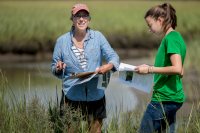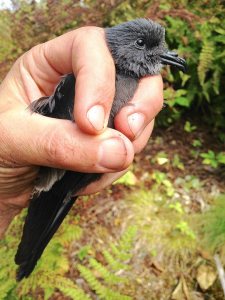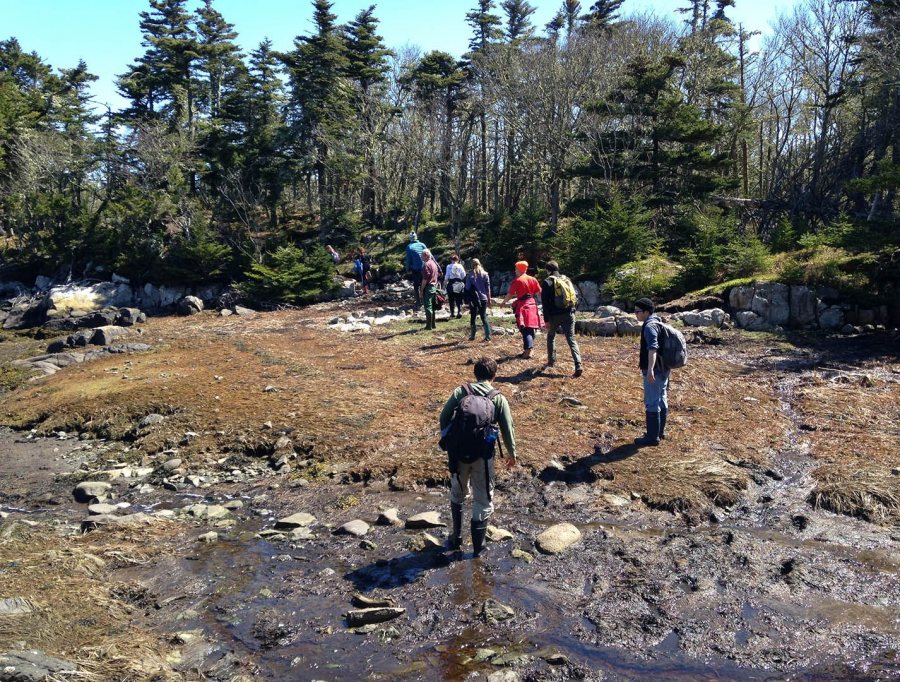
In the deep cold of a Maine winter, the reality of our warming climate feels counterintuitive. But as scientists remind us, climate change is best understood over the long term.
In fact, an imperiled ocean bird off the Maine coast is trying to tell us the same thing. Since 1988, a population of Leach’s storm-petrels in the Bay of Fundy has been breeding less and less successfully, and our warming climate is the culprit, according to new research by Bates Professor of Biology Don Dearborn and colleagues.

New research suggests a link between the decline of Leach’s storm-petrels and a warming climate. (Don Dearborn)
The findings by Dearborn, Professor of Biology Robert Mauck of Kenyon College, and the late Professor Emeritus of Biology Charles Huntington of Bowdoin College were published in Global Change Biology in December.
The researchers discovered that one specific climate variable, global mean temperature, is the “single most important predictor of the storm-petrels’ hatching success.”
“Our analysis points out both whether any climate variable is involved” in the birds’ breeding decline — the answer is a definitive yes — “and also what climate variable is the best predictor, and it’s global mean temperature,” Dearborn says.
Then came “the tipping point.”
Since 1955, researchers on Kent Island, home of the Bowdoin Scientific Station, have recorded all sorts of data about the local storm-petrels, including the birds’ success at breeding, determined by checking if there’s a chick in a nest where previously there had been an incubating egg.
Reviewing data from 1955 to 2010, the researchers saw that the petrels’ hatching success initially improved with the rise in global mean temperature. Then came “the tipping point,” when success stopped improving. “That year was 1988,” they report. Since then, hatching success has declined as temperatures have continued to increase.
A warming climate affects species in myriad ways, and it’s believed that “changes in food availability and food quality, paralleled by marked changes in fisheries” are causing the birds’ decline on Kent Island.
Quite a few climate variables touch Leach’s storm-petrels, birds that travel great distances within and between breeding seasons. “These birds are in very different places at different times of the year, and even on different days,” Dearborn says. Many variables mean there have been a variety of “reasonable biological hypotheses” to explain what’s happening to the birds.
Besides the rise in global temperature, there are regional temperature changes. There’s the rise in sea surface temperatures, both in the North Atlantic where the birds find food in the summer, and near the equator where they spend the winter. There’s the temperature in the birds’ own burrows, where they incubate eggs.
By building statistical models with different combinations of known climate variables, the researchers found that the global mean temperature, though “a single, broad-brush metric,” nevertheless provides the most useful index to capture “the complexity faced by these seabirds over a half-century of climate change.”
“It is the great integrator.”
With global temperatures unlikely to return to their pre-1988 levels, the researchers warn that “the future is not bright for this marine vertebrate breeding in the Bay of Fundy.”
Beyond the fate of the storm-petrels, the study underscores the need to think about climate change as a global phenomenon, “even as the local climate changes differently in different places,” Dearborn explains.
Accordingly, “global mean temperature should be a useful predictor for other natural populations around the world, particularly for other species that travel across large spatial scales, as storm-petrels do,” Dearborn says.
As the researchers say in their paper, “Global temperature is an index of an entire planet’s worth of interactions. It is the great integrator.”





